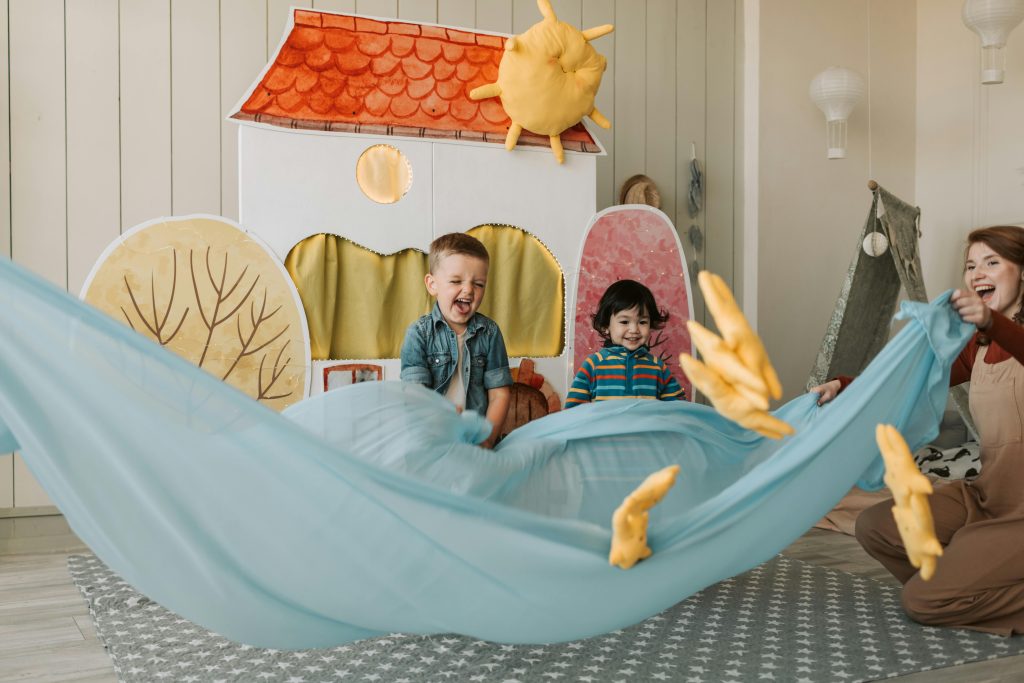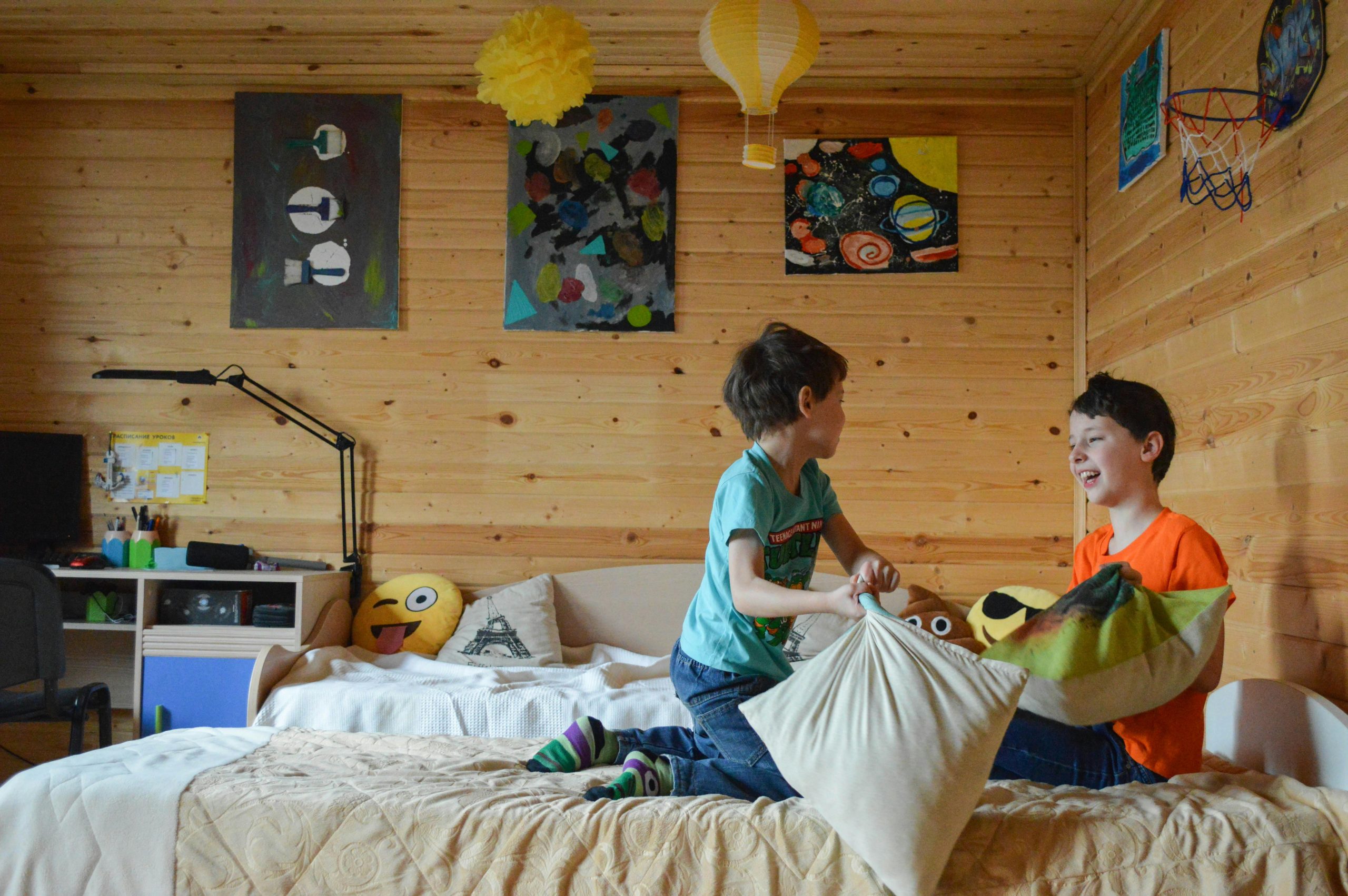Unleash Your Child’s Creativity with DIY Fashion Design!
DIY fashion design, or Do-It-Yourself fashion design, is a creative and fun activity that allows children to express their individuality and style through clothing. It involves designing and creating garments from scratch or customizing existing ones with unique embellishments. DIY fashion design is a great activity for kids because it encourages creativity, boosts self-esteem, and enhances fine motor skills.
Child’s Creativity with DIY Fashion Design!

Benefits of encouraging creativity in children
Encouraging creativity in children has numerous benefits that extend beyond the realm of DIY fashion design. When children engage in creative activities, such as designing and making their own clothes, they develop improved problem-solving skills. They learn to think outside the box and find innovative solutions to design challenges.
Engaging in DIY fashion design also boosts self-esteem and confidence in children. When they see their ideas come to life and receive positive feedback from others, they feel a sense of accomplishment and pride. This newfound confidence can carry over into other areas of their lives, helping them tackle challenges with a positive mindset.
Additionally, DIY fashion design enhances fine motor skills in children. Sewing, cutting fabric, and adding embellishments require precise hand movements and coordination. These activities help children develop dexterity and improve their hand-eye coordination.
Furthermore, DIY fashion design encourages self-expression. Children have the opportunity to showcase their unique style and personality through the clothes they create. This allows them to develop a sense of identity and individuality from a young age.
Materials needed for DIY fashion design
To get started with DIY fashion design, you will need a few basic materials. These include:
1. Fabric: Choose fabrics that are suitable for the garment you want to create. Cotton is a versatile option for beginners, as it is easy to work with and comes in a wide range of colors and patterns.
2. Sewing machine: A sewing machine will make the process of creating garments much faster and more efficient. Look for a beginner-friendly sewing machine with basic features.
3. Thread: Choose thread that matches the color of your fabric or opt for a contrasting color for a unique look.
4. Scissors: Invest in a good pair of fabric scissors that are sharp and comfortable to use.
5. Pins and needles: These are essential for holding fabric pieces together before sewing them.
6. Measuring tape: Accurate measurements are crucial for creating well-fitting garments, so make sure to have a measuring tape on hand.
You can purchase these materials at craft stores, fabric stores, or online retailers that specialize in sewing supplies.
Step-by-step guide to creating a basic garment
Creating a basic garment from scratch may seem daunting at first, but with the right instructions, it can be a fun and rewarding experience. Here is a step-by-step guide to help you get started:
1. Choose a pattern: Look for beginner-friendly patterns that come with detailed instructions. You can find patterns online or in sewing books.
2. Take measurements: Measure the child’s body accurately to ensure a well-fitting garment. Follow the pattern’s instructions on how to take measurements.
3. Cut out the fabric: Use the pattern pieces as guides to cut out the fabric pieces needed for the garment. Make sure to follow the cutting layout provided in the pattern instructions.
4. Pin and sew: Pin the fabric pieces together according to the pattern’s instructions. Use the sewing machine to sew along the pinned edges, following the seam allowances specified in the pattern.
5. Try it on and make adjustments: Once you have sewn all the pieces together, have the child try on the garment to check for fit. Make any necessary adjustments by taking in or letting out seams.
6. Finish the edges: Use techniques such as hemming or serging to finish the raw edges of the garment and give it a polished look.
7. Add closures and finishing touches: Depending on the garment, you may need to add closures such as buttons, zippers, or snaps. Follow the pattern’s instructions for attaching these closures. Finally, add any desired embellishments to personalize the garment.
Tips for selecting fabrics and colors
Choosing the right fabric and colors for your DIY fashion design project is crucial for achieving the desired look and feel. Here are some tips to help you make the right choices:
1. Consider the garment’s purpose: Think about the intended use of the garment. If it’s a dress for a special occasion, you may want to choose a fabric with a bit of drape, such as silk or chiffon. For everyday wear, cotton or linen are good options.
2. Take into account the child’s preferences: Involve the child in the fabric selection process and consider their preferences. Let them choose colors and patterns that they love, as this will make them more excited about wearing the finished garment.
3. Think about comfort: Ensure that the fabric you choose is comfortable to wear. Consider factors such as breathability, softness, and stretch if necessary.
4. Test the fabric: If possible, feel the fabric before purchasing it. Make sure it is of good quality and will hold up well after washing and wearing.
5. Consider color combinations: When selecting colors for your DIY fashion design project, consider color theory principles such as complementary colors (colors opposite each other on the color wheel) or analogous colors (colors next to each other on the color wheel). Experiment with different combinations to create visually appealing garments.
Ideas for customizing garments with embellishments
Adding embellishments to your DIY fashion design projects is a great way to make them unique and personalized. Here are some ideas for embellishments you can use:
1. Appliques: Appliques are decorative patches that can be sewn or ironed onto fabric. They come in various shapes, sizes, and designs, allowing you to add a pop of color or a fun element to your garment.
2. Embroidery: Embroidery is the art of decorating fabric with needle and thread. You can add intricate designs, monograms, or even simple stitches to enhance the look of your garment.
3. Beads and sequins: Adding beads and sequins can instantly elevate the look of a garment. Sew them onto the fabric in patterns or create unique designs.
4. Fabric paint: Fabric paint allows you to create custom designs on your garments. Use stencils or freehand painting techniques to add color and patterns.
5. Ribbons and trims: Ribbons and trims can be used to add decorative borders, accents, or straps to your garments. They come in various colors, widths, and textures, allowing you to customize your design.
When adding embellishments, make sure to consider the child’s comfort and safety. Avoid using small parts that could pose a choking hazard or irritate the skin.
How to involve your child in the design process
Getting your child involved in the design process is an excellent way to foster their creativity and make the DIY fashion design experience more enjoyable for them. Here are some tips for involving your child:
1. Let them choose fabrics and colors: Allow your child to have a say in the fabric and color choices for their garment. This will give them a sense of ownership over the project and make them more excited about the end result.
2. Encourage their ideas: Listen to your child’s ideas and encourage them to express their creativity. Even if their ideas seem unconventional, let them explore their imagination and find ways to incorporate their ideas into the design.
3. Collaborate on design decisions: Involve your child in decision-making processes such as selecting patterns, choosing embellishments, and making adjustments to the design. This will help them develop problem-solving skills and a sense of responsibility for their creations.
4. Provide guidance and support: While it’s important to let your child take the lead, provide guidance and support throughout the process. Offer suggestions, teach them new techniques, and help them troubleshoot any challenges they may encounter.
5. Celebrate their achievements: Celebrate your child’s achievements at each stage of the design process. Praise their creativity, craftsmanship, and perseverance. Display their finished garments proudly and encourage them to share their creations with others.
Ways to incorporate sustainable and eco-friendly practices
Incorporating sustainable and eco-friendly practices into your DIY fashion design projects is not only good for the environment but also teaches children the importance of being mindful consumers. Here are some tips for making your projects more sustainable:
1. Upcycle old garments: Instead of buying new fabric, consider repurposing old garments or thrifted clothing. This reduces waste and gives new life to items that would otherwise end up in landfills.
2. Use organic or recycled fabrics: Look for fabrics made from organic or recycled materials. These fabrics are produced using environmentally friendly processes and have a lower impact on the planet.
3. Reduce fabric waste: Plan your projects carefully to minimize fabric waste. Optimize the layout of pattern pieces on the fabric to use every inch efficiently.
4. Choose natural dyes: If you want to add color to your garments, consider using natural dyes made from plants or food waste instead of synthetic dyes that can be harmful to the environment.
5. Avoid single-use materials: Instead of using disposable materials such as plastic buttons or snaps, opt for durable alternatives like wooden or metal closures that can be reused.
Safety precautions to take when working with children
When working with children on DIY fashion design projects, it’s important to prioritize safety. Here are some important safety precautions to keep in mind:
1. Supervise children at all times: Never leave children unattended when they are using sewing machines, scissors, or other potentially dangerous tools.
2. Teach safe handling of tools: Teach children how to handle tools safely and demonstrate proper techniques. Show them how to use scissors, needles, and sewing machines with caution.
3. Use child-friendly tools: Consider using child-friendly tools designed specifically for young sewers. These tools have safety features that make them suitable for children to use.
4. Store materials safely: Keep sharp objects such as scissors and needles out of reach of young children. Store materials in a secure place to prevent accidents.
5. Choose child-safe embellishments: Avoid using small parts that could pose a choking hazard for young children. Opt for larger beads, buttons, or appliques that are securely attached to the garment.
Showcase of successful DIY fashion design projects
Seeing examples of successful DIY fashion design projects can inspire and motivate both children and parents. Here are some examples of successful projects:
1. Customized t-shirts: Children can use fabric paint, stencils, or iron-on transfers to create unique designs on plain t-shirts.
2. Upcycled denim jackets: Old denim jackets can be transformed into trendy pieces by adding patches, embroidery, or fabric inserts.
3. Personalized dresses: Children can design their own dresses by choosing fabrics, patterns, and embellishments that reflect their style and personality.
4. Statement accessories: Children can create statement accessories such as headbands, scarves, or bags using fabric scraps and embellishments.
5. Costume creations: DIY fashion design is a great way for children to create their own costumes for Halloween or dress-up play. They can let their imagination run wild and design costumes that reflect their favorite characters or themes.
Sharing your child’s creations with others is a great way to celebrate their achievements and inspire others to engage in DIY fashion design. You can showcase their projects on social media, create a portfolio or scrapbook, or even organize a fashion show for friends and family.
Conclusion and encouragement to continue fostering creativity in children
In conclusion, DIY fashion design is a wonderful activity for children that encourages creativity, boosts self-esteem, and enhances fine motor skills. By involving children in the design process, providing them with the necessary materials and guidance, and prioritizing safety, parents can foster their child’s creativity and help them develop important life skills.
Encouraging creativity in children has numerous benefits beyond DIY fashion design. It improves problem-solving skills, boosts self-esteem and confidence, enhances fine motor skills, and encourages self-expression. By engaging in creative activities such as DIY fashion design, children develop a sense of identity and individuality from a young age.
So, whether you’re a parent looking for a fun activity to do with your child or an educator seeking to incorporate more creative projects into your curriculum, DIY fashion design is an excellent choice. It allows children to explore their imagination, express their unique style, and develop valuable skills that will benefit them throughout their lives. So go ahead, grab some fabric and scissors, and let your child’s creativity soar!


